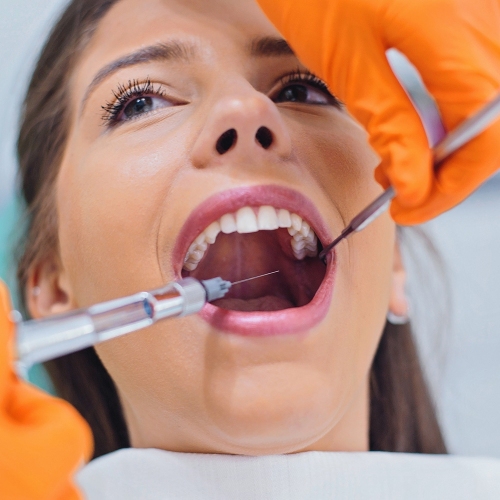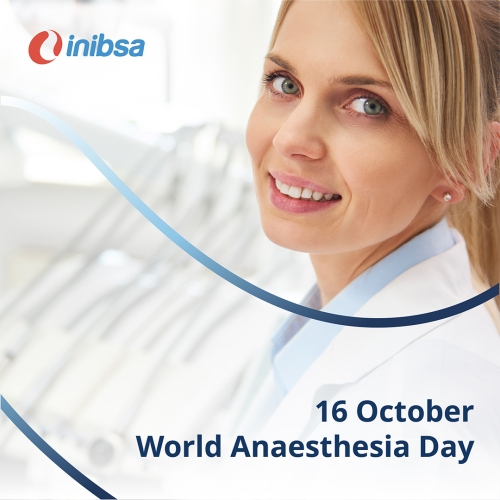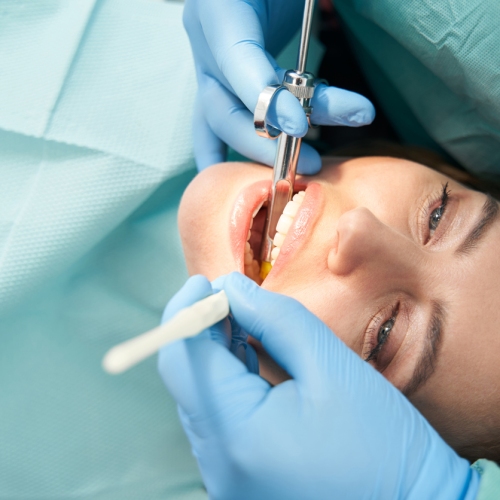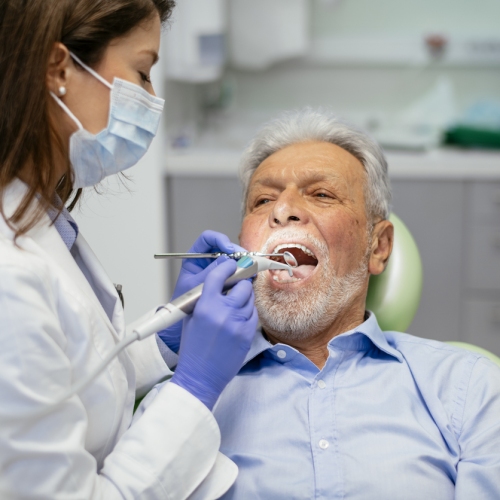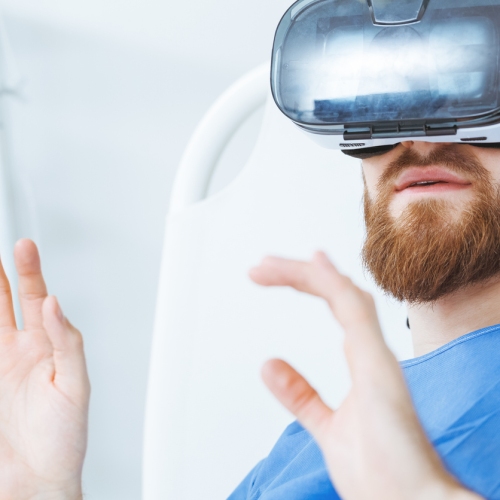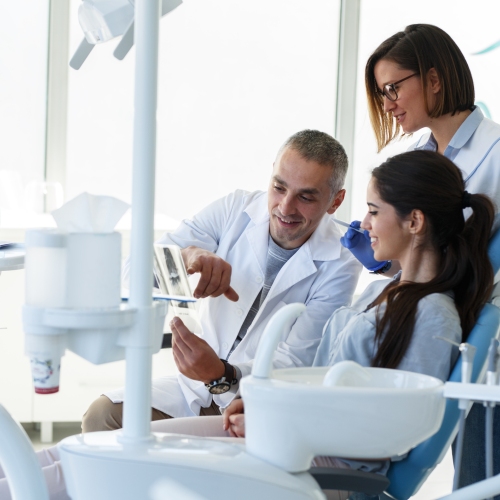What Is Mepivacaine?
Mepivacaine is a medium-short duration local anaesthetic for infiltration and nerve block anaesthesia for adults, adolescents, and children 4 years and older. Compared to other local anaesthetics, mepivacaine has the least vasodilating effect. This allows mepivacaine to be used without a vasoconstrictor.2 Mepivacaine is available as a 3% solution without epinephrine and a 2% solution with 1:100,000 epinephrine.
Without epinephrine, its onset of action is between 3 and 5 minutes. Its duration of action for pulpal anaesthesia is 25 minutes for maxillary infiltration and 40 minutes for inferior alveolar nerve block (IANB). The duration of action for soft tissue is 90 minutes for maxillary infiltration and 165 minutes for IANB. In formulation with 1:100,000 epinephrine, its onset of action is between 2 and 3 minutes. Its duration of action for pulpal anaesthesia is 60 minutes, and for soft tissue, it is 180 to 300 minutes.
Adverse Reactions
The adverse reactions of mepivacaine are similar to other amide-type local anaesthetics, including:3
- Restlessness
- Anxiety
- Dizziness
- Tinnitus
- Blurred vision
- Nausea and vomiting
- Chills
- Pupil constriction
- Hypotension (or hypertension)
- Bradycardia
- Ventricular arrhythmia
Use in Specific Populations
Mepivacaine has properties that may make it a more desirable local anaesthetic in specific populations of dental patients, including children, older adults, patients with infections, and patients with sulphite allergies.

Paediatric Patients
Mepivacaine is often used in paediatric dentistry due to its shorter duration of action and availability without a vasoconstrictor. The shorter duration of action means that the effects of the local anaesthetic will wear off faster and may help reduce the risk of post-anaesthesia trauma.1 Children generally have a lack of awareness after anaesthesia, increasing the risk of soft tissue injury.2 However, children also have an increased risk of systemic toxicity from local anaesthetics, and toxicity with mepivacaine has been reported.2
Geriatric Patients
Older adults (over 65 years) are more likely to have multiple medical conditions, including cardiac conditions, that may increase the risk of adverse events with a local anaesthetic.4 The use of a vasoconstrictor can increase the risk of complications in patients with cardiac conditions. Vasoconstrictors can cause adverse reactions, such as increased heart rate and hypertension.5 Even if elderly patients do not have documented cardiac conditions, it may reduce the risk of complications to avoid using vasoconstrictors due to the normal effects of ageing on the heart.2
Older adults are more likely to take multiple medications simultaneously.4 The use of epinephrine is contraindicated in patients taking tricyclic antidepressants and monoamine oxidase inhibitors (MAOIs).3 Mepivacaine 3% without epinephrine may be a safer choice of local anaesthesia for elderly patients who may have cardiac conditions or are taking multiple medications.1
Patients With Infections
Mepivacaine has a lower ionisation constant (pKa) compared to other local anaesthetics, a useful property in patients with infections.1 Inflammation caused by an infection creates an acidic environment that can make anaesthetising the area more difficult. Local anaesthetics must dissociate into the ionised form to bind to and block voltage-gated sodium channels. When the intracellular environment is more acidic, the inactive, un-ionised form of the drug is favoured.6 With a lower pKa than other local anaesthetics, mepivacaine will have more of the ionised form of the drug available.1
Patients With Sulphite Allergies
While patient-reported local anaesthetic allergies are not unusual, true allergies to the anaesthetic itself are rare — reported in between 0.1% and 1% of patients.2,6 Some patients with a reported anaesthetic allergy may be allergic to other components of the formulation. Sodium metabisulphite is found in local anaesthetic formulations with vasoconstrictors and may trigger an allergic reaction.1 Because mepivacaine is available without a vasoconstrictor and, therefore, without sodium metabisulphite, it may be used in patients with a sulphite allergy.1
Patients With Hyperthyroidism
Patients with hyperthyroidism may be more likely to experience cardiac adverse reactions from vasoconstrictors, such as epinephrine. Ideally, patients with hyperthyroidism should be treated before dental procedures. However, in cases of a dental emergency, mepivacaine without epinephrine may be a safer option for local anaesthesia in these patients.7
Choosing the Right Local Anaesthetic
There are many factors to consider when choosing the right local anaesthetic for a procedure. Mepivacaine’s short duration of action, lower pKa, and availability in a formulation without a vasoconstrictor make it a good option for some groups of patients.

References:
- Brockmann WG. Mepivacaine: a closer look at its properties and current utility. Gen Dent. 2014 Nov-Dec;62(6):70-75; quiz 76. PMID: 25369391.
- Decloux D, Ouanounou A. Local anaesthesia in dentistry: a review. Int Dent J. 2020 Sep 17;71(2):87-95. doi: 10.1111/idj.12615. Epub ahead of print. PMID: 32944974; PMCID: PMC9275172.
- Mayo Clinic. Mepivacaine (Injection Route). Updated Feb. 01, 2023. Access November 22, 2023.
- Ye L, Yang-Huang J, Franse CB, et al. Factors associated with polypharmacy and the high risk of medication-related problems among older community-dwelling adults in European countries: a longitudinal study. BMC Geriatr. 2022 Nov 7;22(1):841. doi: 10.1186/s12877-022-03536-z. PMID: 36344918; PMCID: PMC9641844.
- Halling F, Neff A, Ziebart T. Local anesthetic usage among dentists: German and international data. Anesth Prog. 2021 Mar 1;68(1):19-25. doi: 10.2344/anpr-67-03-12. PMID: 33827123; PMCID: PMC8033583.
- Becker DE, Reed KL. Local anesthetics: review of pharmacological considerations. Anesth Prog. 2012 Summer;59(2):90-101; quiz 102-103. doi: 10.2344/0003-3006-59.2.90. PMID: 22822998; PMCID: PMC3403589.
- Lee KJ, Park W, Pang NS, et al. Management of hyperthyroid patients in dental emergencies: a case report. J Dent Anesth Pain Med. 2016 Jun;16(2):147-150. doi: 10.17245/jdapm.2016.16.2.147. Epub 2016 Jun 30. PMID: 28879309; PMCID: PMC5564085.

